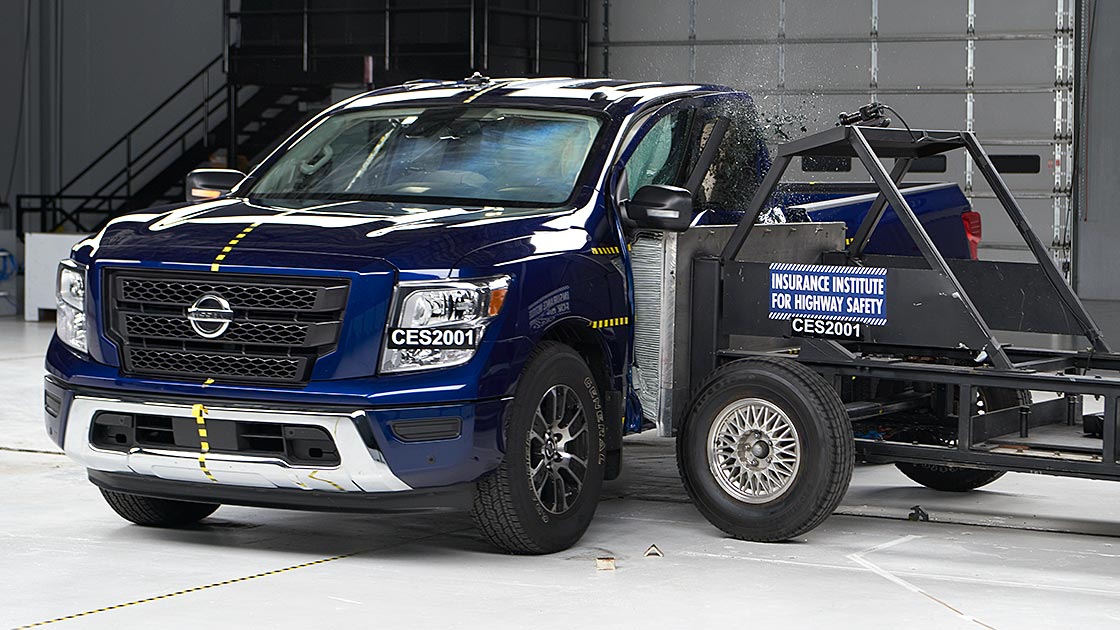Nissan Titan slips in crash test, gets high marks for crash prevention
February 2, 2021

In a rare step backward, the 2021 Nissan Titan crew cab earns a lower rating in the passenger-side small overlap test than its predecessor after changes to the large pickup’s structure.
While the 2019 crew cab earned a good rating in all six of the Insurance Institute for Highway Safety’s crashworthiness evaluations, the 2021 model earns an acceptable passenger-side rating due to increased intrusion into the front seat passenger’s space. The rating also applies to the 2021 Titan extended cab. The 2020 models were not rated for passenger-side small overlap protection.
For 2020, Nissan made changes to the front frame structure, hinge pillar, roof rail and lower sill of both pickups and added driver-side knee airbags. Beginning with 2021 models built after September 2020, the company also added passenger-side knee airbags, so these ratings apply to vehicles built after that date.
On the other side of the safety ledger, the Titan now comes with standard front crash prevention that earns superior ratings in the Institute’s vehicle-to-vehicle and vehicle-to-pedestrian tests. Both the crew cab and extended cab pickups avoided collisions at 12 mph and 25 mph in the vehicle-to-vehicle test and avoided hitting the dummy or slowed to a near stop in all the pedestrian scenarios, including the often challenging 37 mph trial that simulates an adult walking in the travel lane in the same direction as the vehicle. These ratings apply to 2020 and 2021 models; no front crash prevention was available on earlier models.
However, the 2021 Titans also earn lower headlight ratings than the 2019 models. Both variations offered on the pickups earn poor ratings, compared with earlier scores of marginal.